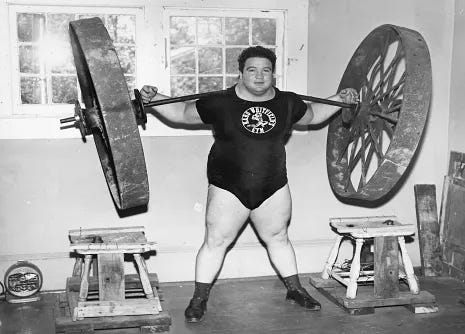Metabolism HIIT
In this edition of The Rundown, Apple makes some changes, high-intensity training reshapes metabolism, and walking is the key to dealing with the most common form of arthritis.
The Rundown
No Watch Required. Apple announced that users of their Fitness app no longer need an Apple Watch in order to access it. With iOS 16, Apple is bringing the software to iPhone and like the watch version, the phone will allow you to set daily activity goals and use a “Move ring” to stay motivated. The iPhone will use its sensors to track your steps and workouts and covert the information into an estimation of calories burned.
Watch Your Zones. While you will no longer need an Apple Watch to use the Fitness app, if you have Apple Watch Series 4 and higher, expect a software update in the fall that will upgrade your fitness metrics. WatchOS 9 will have new features for runners including vertical oscillation, stride length and ground contact time along with a new workout view that lets you see segments, splits and elevation at a glance. A heart rate zones feature will offer more details about the intensity of your workout and the new Sleep Stages will tell you how much time you spent in REM, core and deep sleep.
Metabolism HIIT. A new study sheds light on how high-intensity interval training (HIIT) can reshape metabolism. Researchers at the University of Copenhagen, Denmark found that HIIT boosts the amount of proteins in skeletal muscle that are needed for energy metabolism and muscle contraction. It also chemically alters central metabolic proteins.
The research team had eight healthy male volunteers complete five weeks of high-intensity cycling. The men worked out three times per week, completing four minutes of cycling at a target heart rate of more than 90% of their max followed by a two minute rest. They repeated this four to five times per workout. Using mass spectrometry, the team looked at changes to the composition of over 3,000 proteins in tissue samples taken from the men’s thighs before and after the study.
The analyses showed an increase in the production of proteins used to build mitochondria, which produce energy in cells and in proteins related to muscle contractions. The findings suggest that changes in the regulation of proteins through a chemical reaction called acetylation may contribute to boosting metabolism. The hope is that the work “will stimulate further research into how exercise helps improve metabolic health in humans.”
Walking Away From Knee Pain. Researchers from Baylor College of Medicine have published findings (read the abstract) that suggest walking for exercise can reduce knee pain among people 50 and older diagnosed with knee osteoarthritis, the most common form of arthritis.
The team examined the results of the Osteoarthritis Initiative, a multiyear observational study where participants self-reported the time and frequency they walked. Those who reported walking for exercise decreased their odds of new frequent knee pain by 40% compared to non-walkers.
First author, Dr. Grace Hsiao-Wei Lo, says the study “supports the possibility that walking for exercise can help to prevent the onset of daily knee pain and might also slow down the worsening of damage inside the joint from osteoarthritis.”
Replay
This week’s vintage moment in fitness culture is brought to you by Paul Anderson, renowned for back-lifting 6,270 pounds at a 1957 exhibition, and holding the title of “World’s Strongest Man” for most of the 1960’s. Photo credit: The Anderson family.




